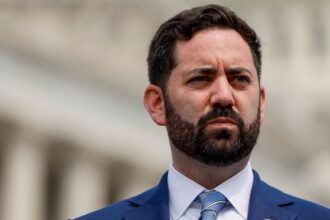The federal deposit insurance system has withstood plenty of banking turmoil in its roughly 90-year existence — yet after the extraordinary events of the past two weeks, some experts say the system is broken.
The federal government’s move on Mar. 12 to protect all depositors of the failed Silicon Valley Bank and Signature Bank
SBNY
— even those exceeding the standard $250,000 insurance cap — triggered a wave of questions about the insurance system’s design, how it impacts savers, and what, if anything, that $250,000 cap really means.
“We have a three-tiered system right now,” Morgan Ricks, a Vanderbilt University law professor and former U.S. Treasury Department senior policy advisor, told MarketWatch. In smaller community banks, he said, “the cap is operative and you can lose your money.” In mid-size regional banks, “we’re really not sure” about the cap’s significance, he said, because it depends on whether regulators make a special exception as they did for Silicon Valley Bank and Signature Bank. Then there are the largest, “too big to fail” banks, “where no one imagines for a nanosecond that the deposit-insurance cap is operative,” he said. “It’s a broken system that is as we speak causing deposit balances to migrate to the biggest banks — which shouldn’t be what we want.”
Such concerns have prompted a string of proposals to overhaul the system, as lawmakers, academics and industry experts suggested raising or eliminating the cap, or scrapping the $250,000 limit for certain types of accounts. Ricks, for example, advocates for removing the cap completely. Sen. Elizabeth Warren, Democrat of Massachusetts, has called for raising the cap, while Rep. Patrick McHenry, Republican of North Carolina, has said that “all options should be on the table” when looking at potential changes in the insurance limit.
Treasury Secretary Janet Yellen told the Senate earlier this week that her department isn’t considering “blanket” deposit insurance. A day later she told lawmakers that the “strong actions” the government took in the wake of the bank failures ensured that “Americans’ deposits are safe. Certainly we would be prepared to take additional actions if warranted.”
The deposit insurance system matters to almost all Americans. More than 95% of U.S. households had a checking or savings account as of 2021, according to the Federal Deposit Insurance Corp. The system, which was spawned by the 1929 stock market crash and the thousands of early 1930s bank failures that followed, was designed to prevent bank runs and to allow savers to confidently stash their cash in banks without becoming experts in bank balance sheets and credit risk. “Deposit insurance allows me to use a bank without having to worry that my bank will use my money inappropriately and I’ll lose it all,” said Todd Phillips, a former FDIC attorney and a policy advocate and fellow at the Roosevelt Institute, a think tank.
Here’s what you need to know about how your bank accounts are protected — and the potential risks and rewards of overhauling the system.
1. Have the rules changed?
No. Despite all the talk about expanding insurance coverage and the special exceptions made for the recently failed banks, the rules for ordinary savers are still the same: Each depositor at an insured bank generally gets up to $250,000 of coverage per account ownership category. There are many ways to structure accounts and spread cash among banks to cover far higher dollar amounts. But don’t just stash more than $250,000 in a single account and assume you’ll be fully covered if the bank fails, experts advise. For now, “$250,000 is the law of the land,” said Ken Tumin, senior industry analyst at LendingTree.
2. But bank failures are pretty rare, right?
They’re more common than you might think. There were no bank failures in 2022 or 2021, but four banks failed in 2020, four in 2019, and eight in 2017, according to the FDIC.
3. What happened to uninsured depositors when banks failed in years past?
In most cases in recent years, a healthy bank has taken over and assumed all of the failed bank’s deposits, including those over the insurance limits, so uninsured depositors maintained access to their cash, Tumin said.
But that hasn’t always been the case. When Enloe State Bank in Cooper, Texas, was closed by the Texas Department of Banking in 2019, for example, another bank acquired the insured deposits and certain other assets, but the FDIC told depositors with accounts exceeding $250,000 that a claims agent may need to review their accounts.
In some cases, it can take years to sell off the assets of a failed bank, and uninsured depositors may receive periodic payments on their claim as assets are sold, according to the FDIC. To date, the FDIC has paid out about 40% of Enloe State Bank claims, agency data show.
4. How much of the money in bank accounts is uninsured?
About $7.7 trillion — more than 40% of U.S. domestic deposits — was uninsured at the end of 2022, according to the FDIC.
Before this year’s bank failures, the level of uninsured deposits was already drifting lower, according to the FDIC data. That’s likely because rising rates made Treasury bills more attractive, Tumin said. And now, he said, the banking turmoil will likely drive the uninsured figures even lower.
5. Are taxpayers on the hook for the extra protection provided to depositors in the failed banks?
Not directly. As Yellen told Congress this week, “no losses from the resolution of these banks are being borne by the taxpayer. Deposit protection is provided by the Deposit Insurance Fund, which is funded by fees on insured banks.”
If that deposit insurance fund were to run low on cash, however, the FDIC has the authority to borrow up to $100 billion from the Treasury to maintain sufficient balances in the fund.
6. Can regulators wave a magic wand and guarantee all deposits at all banks?
No. Under the Dodd-Frank Act passed after the 2007-2009 financial crisis, such a sweeping change in deposit insurance coverage requires Congressional approval.
In the case of Silicon Valley Bank and Signature Bank, regulators protected deposits over $250,000 by relying on a “systemic risk exception” that allows such case-by-case moves to avoid serious adverse consequences for the economy or financial stability.
“A systemic risk exception is not something anyone takes lightly,” a former FDIC official told MarketWatch. “It’s not supposed to happen on a routine basis.”
7. If the system is broken, how do we fix it?
Phillips, the Roosevelt Institute fellow, says Congress should consider scrapping the deposit-insurance cap for non-interest bearing accounts while keeping the $250,000 ceiling for accounts that offer yield. For businesses that may not have the time or expertise to size up the health of a bank, for example, “it makes sense to me to give them deposit insurance just for the health and safety of the broader economy,” he said. “We don’t want these businesses losing money just because a bank fails.”
Sophisticated savers hunting for yield, on the other hand, may well be able to scrutinize a bank’s health and bring some market discipline to bear on banks. So for those yield-seekers above the $250,000 limit, Phillips said, “we shouldn’t insure you, so you can do the due diligence and help ensure the bank makes prudent decisions.”
Another idea, supported by Ricks, the Vanderbilt law professor, and Lev Menand of Columbia Law School, is to get rid of the deposit insurance cap altogether. That would serve the public interest, Ricks and Menand wrote in a recent Washington Post opinion column, by reducing the risk that a single bank failure could cause widespread panic and avoiding payroll disruptions, among other benefits.
8. If deposit insurance is expanded, wouldn’t banks take on more risks?
Maybe. “With deposit insurance, if banks make loans that are successful, the bank profits,” Phillips said. And if the bank makes bad loans and ultimately fails, “it’s the deposit insurer that takes the loss.”
That’s why Phillips and many others advocating for expanded deposit insurance say the changes should come with additional regulation. For example, Congress could bar banks from holding equity interests in borrowers and require that bank directors be independent of the banks’ holding companies, he said.
9. Will the cost of any expanded coverage ultimately get passed on to consumers?
It depends. If banks are paying higher assessments into the deposit insurance fund as a result of higher insurance limits, they could pass those costs on to consumers in the form of lower deposit rates or higher rates on loans and more fees, Tumin said.
But the issue is complex and depends in part on how you design the assessment system, Ricks said. And to the extent deposits are already “implicitly insured, and we backstop them after the fact, that implicit insurance is then charged in assessments back to the banking system” — so in effect, he said, the costs are in the system already.
Read the full article here










